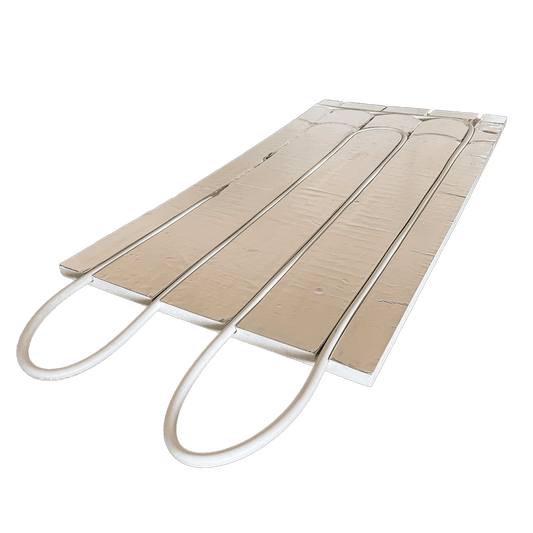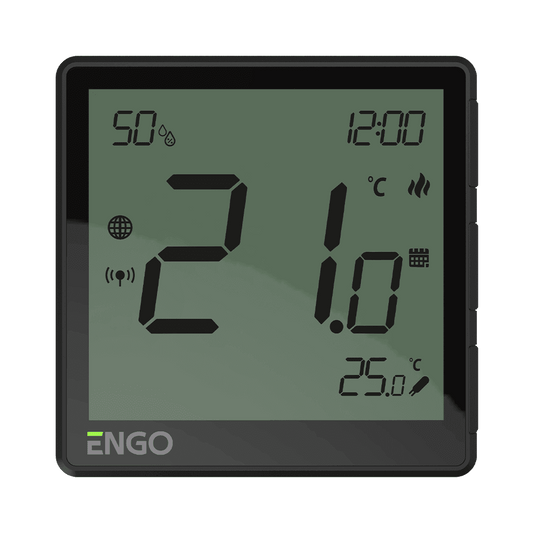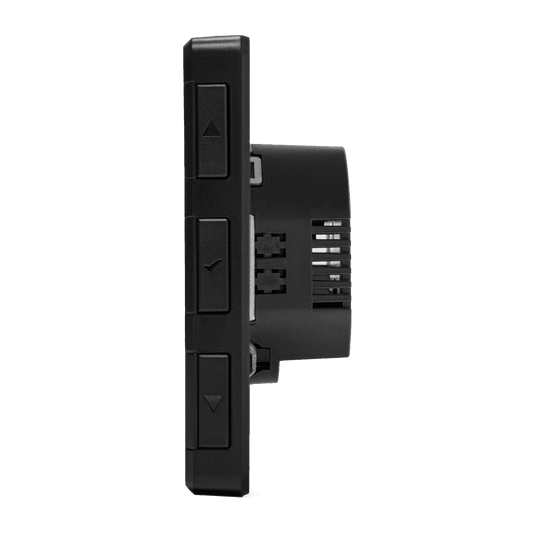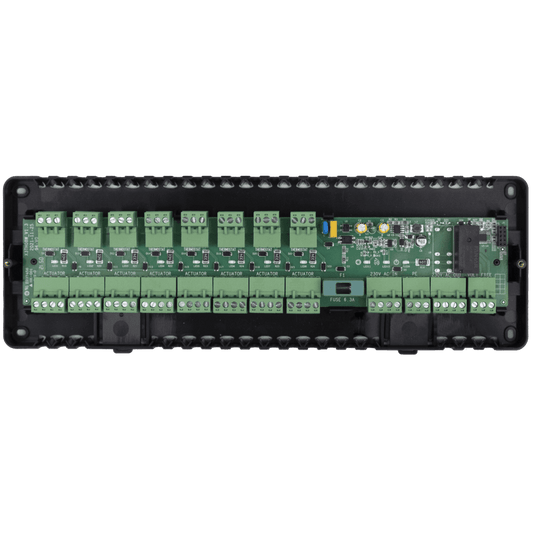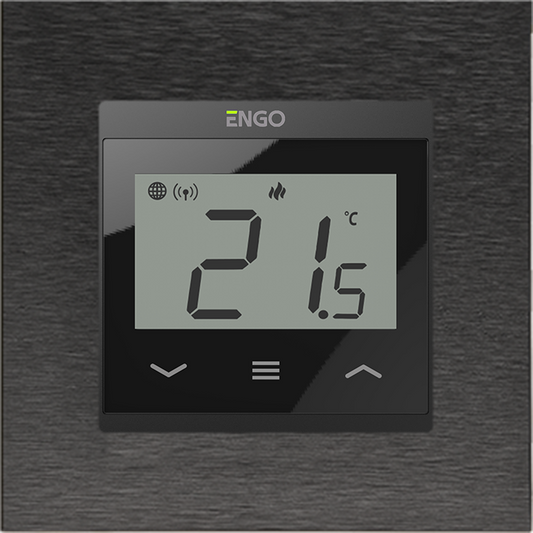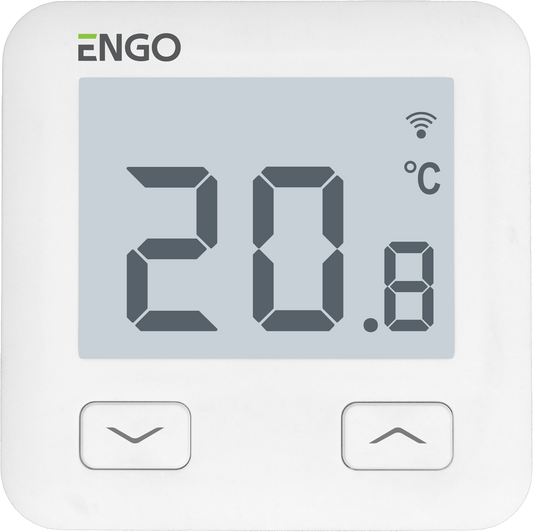Collection: Dry screed underfloor heating
Dry screed underfloor heating – efficient heat with MC Therm
Discover the perfect solution for your flooring: dry screed underfloor heating from MC Therm . Our innovative system combines the advantages of fast, clean installation with efficient heat distribution. Thanks to its low installation height and light weight, dry screed is ideal for new construction, renovations, and refurbishments.
✔ Quick & easy installation – No wet screed, no long drying times
✔ Optimal thermal conductivity – even, energy-efficient heat distribution
✔ Ideal for renovations – Low installation height & low weight
✔ Can be combined with various floor coverings
Rely on quality and comfort with MC Therm dry screed underfloor heating – discover now and order online!
-
Ardus EPS circular element
Regular price From €11,50 EURRegular priceUnit price €15,97/m²Ardus EPS circular element
Regular price From €11,50 EURRegular priceUnit price €15,97/m²Ardus EPS circular element
Regular price From €11,50 EURRegular priceUnit price €15,97/m² -
ArdusAlu EPS circular element
Regular price From €13,30 EURRegular priceUnit price €18,81/m²ArdusAlu EPS circular element
Regular price From €13,30 EURRegular priceUnit price €18,81/m²ArdusAlu EPS circular element
Regular price From €13,30 EURRegular priceUnit price €18,81/m² -
ArdusAlu EPS drywall panel – Straight element for underfloor heating
Regular price From €13,54 EURRegular priceUnit price €18,81/m²ArdusAlu EPS drywall panel – Straight element for underfloor heating
Regular price From €13,54 EURRegular priceUnit price €18,81/m²ArdusAlu EPS drywall panel – Straight element for underfloor heating
Regular price From €13,54 EURRegular priceUnit price €18,81/m² -
Ardus EPS meander element
Regular price From €11,50 EURRegular priceUnit price €15,97/m²Ardus EPS meander element
Regular price From €11,50 EURRegular priceUnit price €15,97/m²Ardus EPS meander element
Regular price From €11,50 EURRegular priceUnit price €15,97/m² -
Ardus Acoustic Wood Fiber Circular Element
Regular price From €15,77 EURRegular priceUnit price €21,90/m²Ardus Acoustic Wood Fiber Circular Element
Regular price From €15,77 EURRegular priceUnit price €21,90/m²Ardus Acoustic Wood Fiber Circular Element
Regular price From €15,77 EURRegular priceUnit price €21,90/m² -
Ardus Acoustic Wood Fiber Meander Element
Regular price From €15,13 EURRegular priceUnit price €21,01/m²Ardus Acoustic Wood Fiber Meander Element
Regular price From €15,13 EURRegular priceUnit price €21,01/m²Ardus Acoustic Wood Fiber Meander Element
Regular price From €15,13 EURRegular priceUnit price €21,01/m²
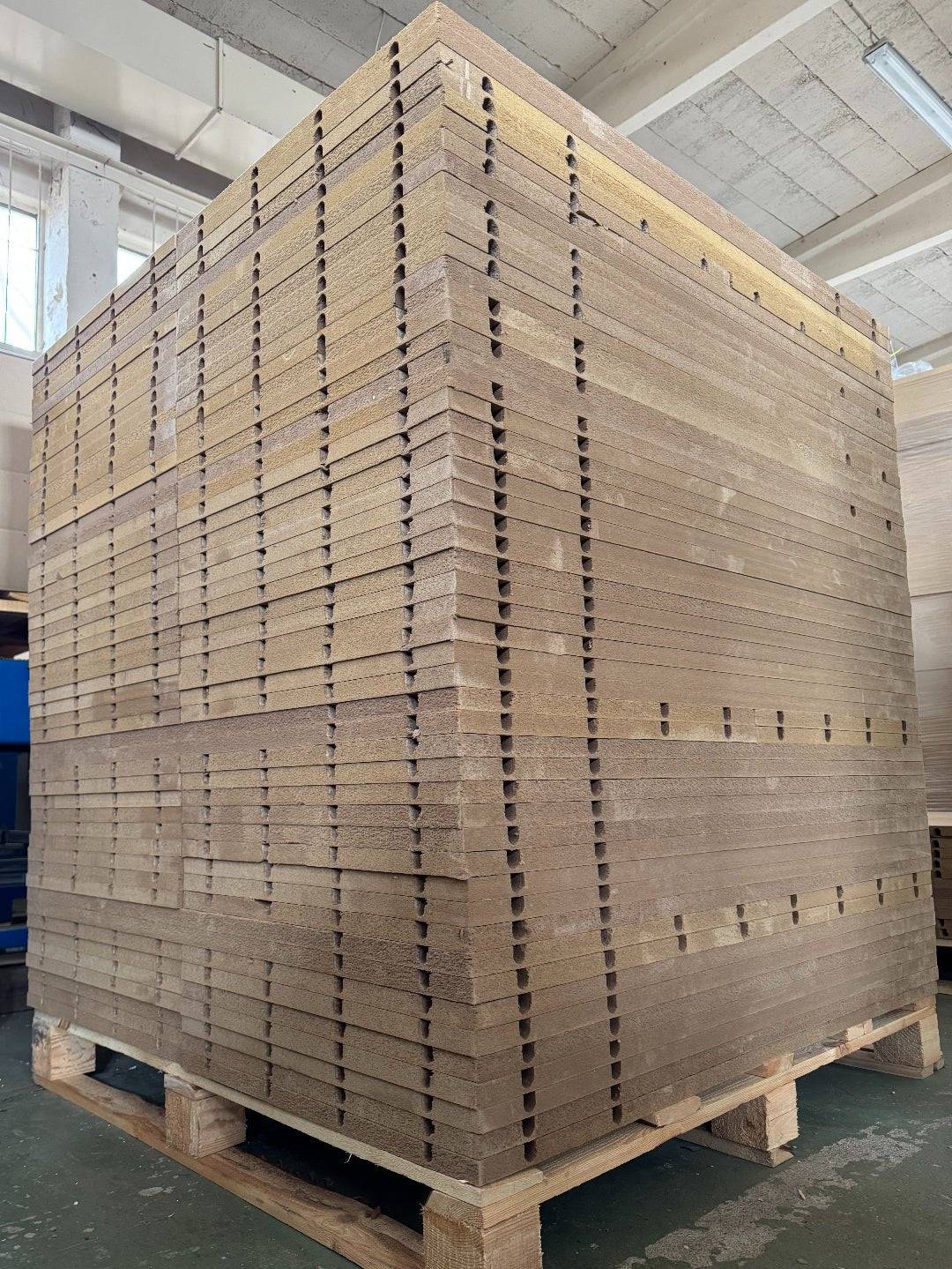
The dry screed underfloor heating for renovation!
Installing MC Therm 's dry screed underfloor heating is the ideal solution for drywall construction and opens up unlimited design possibilities for installing various floor coverings. Instead of enclosing the underfloor heating with wet screed, the system is covered with dry screed elements. This prevents moisture from being introduced during installation.
In addition to an extremely short response time, the dry screed underfloor heating system offers extremely low weight and a low installation height. This makes the MC Therm solution the ideal system for renovating wooden ceilings under extreme time pressure.
Discover the Ardus range and the 25-14 drywall system – for fast, efficient, and flexible underfloor heating! ✅🏡
MC Therm Systemtechnik
ArdusAlu EPS drywall panel – Straight element for underfloor heating
Split
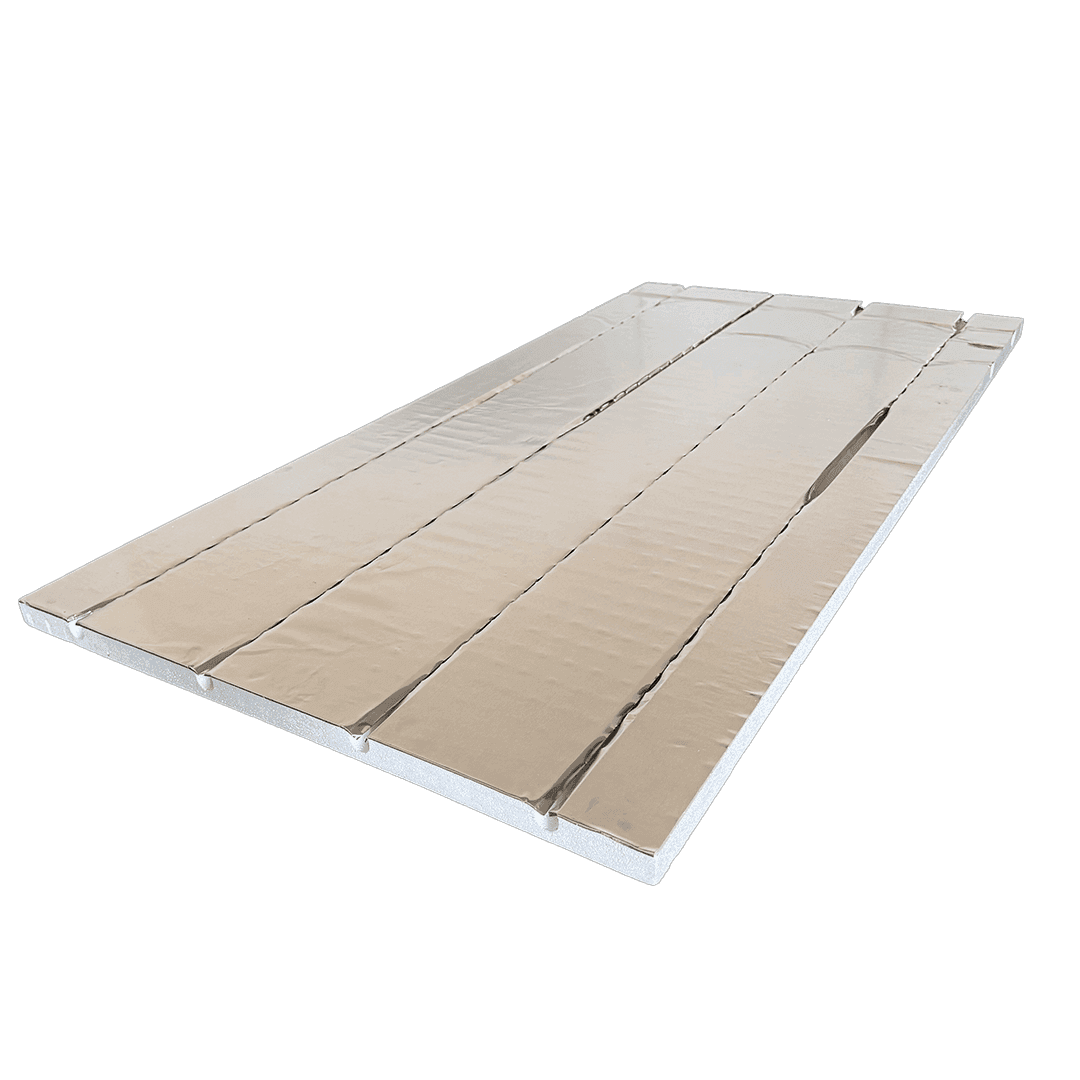
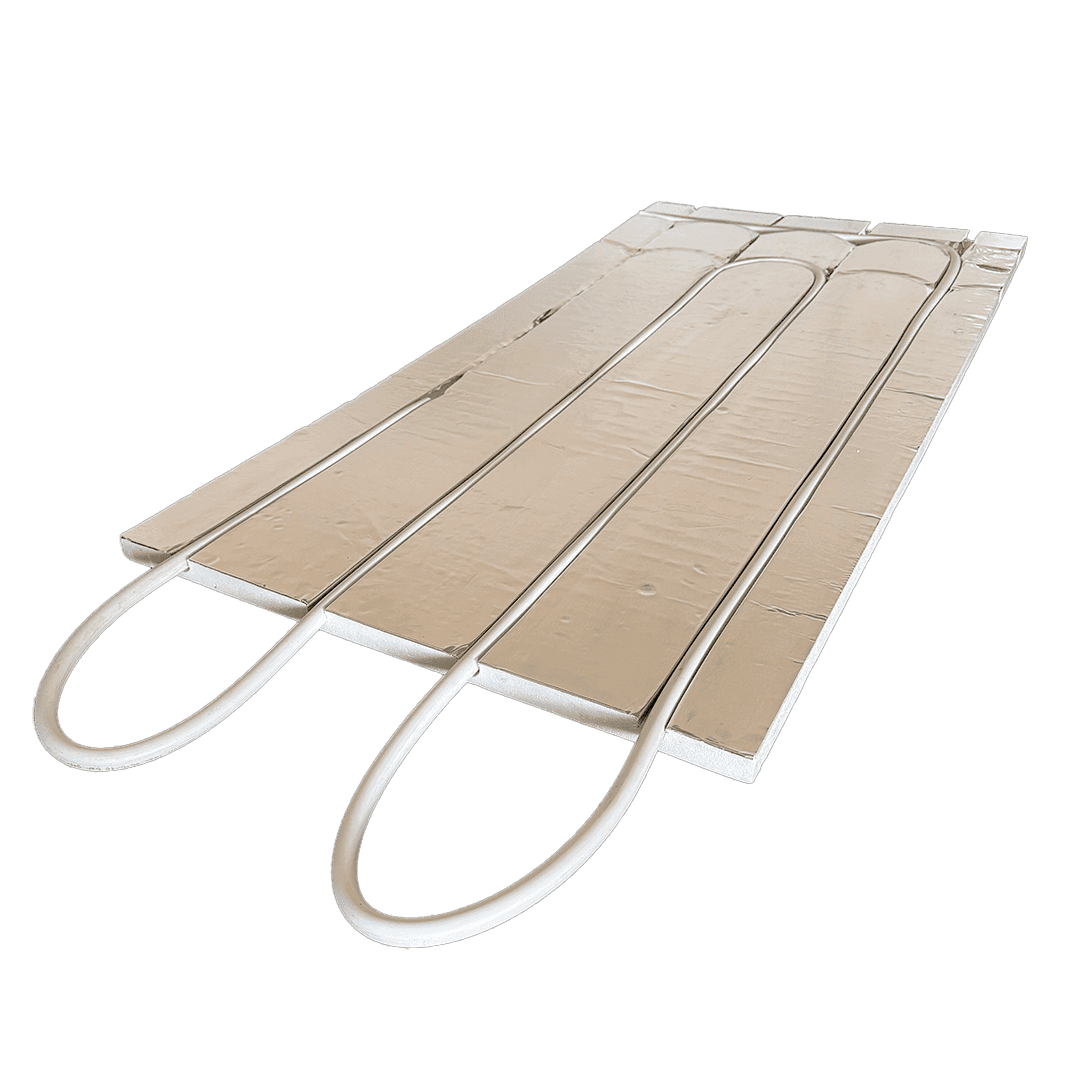
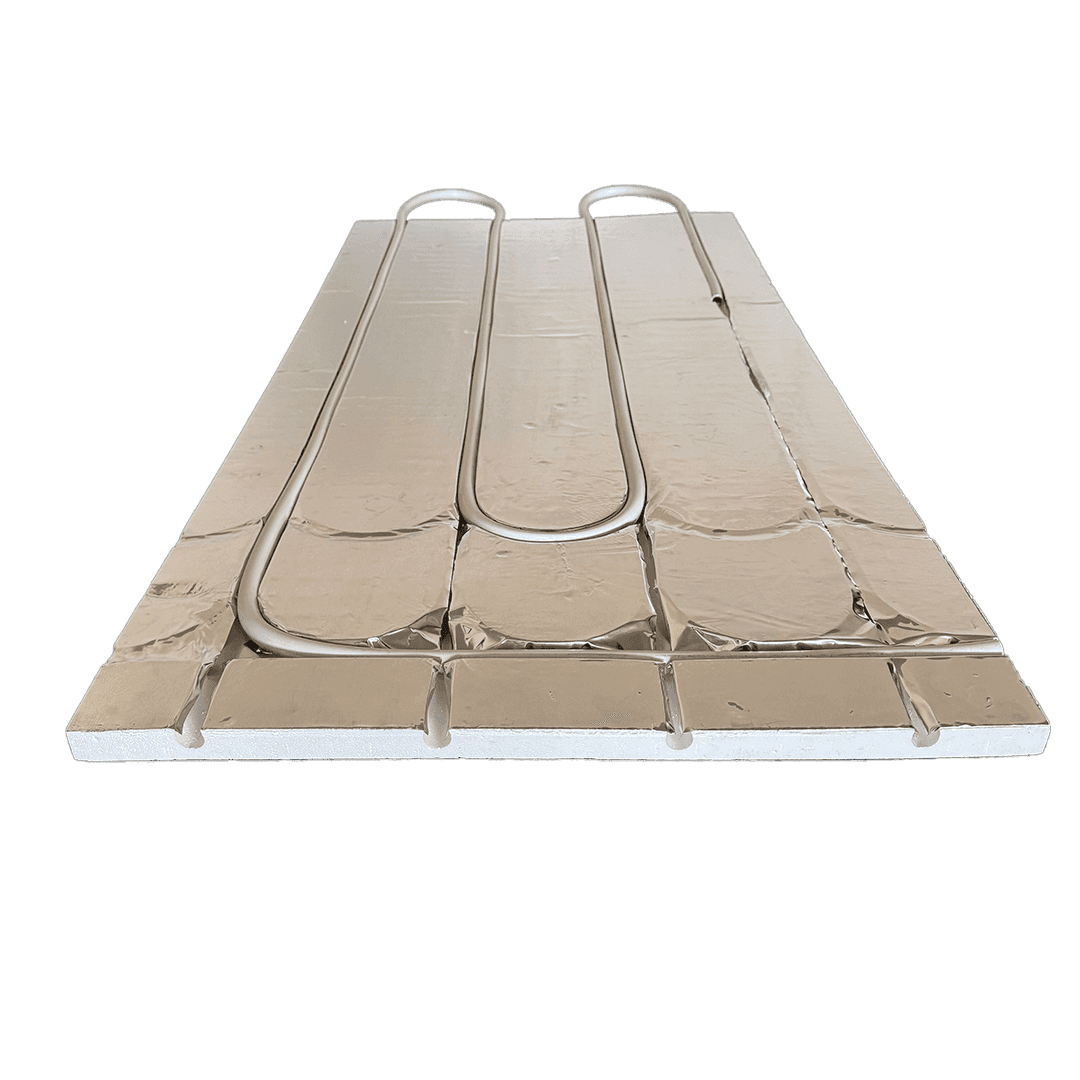

ArdusAlu EPS System - meander element and circular element in installation
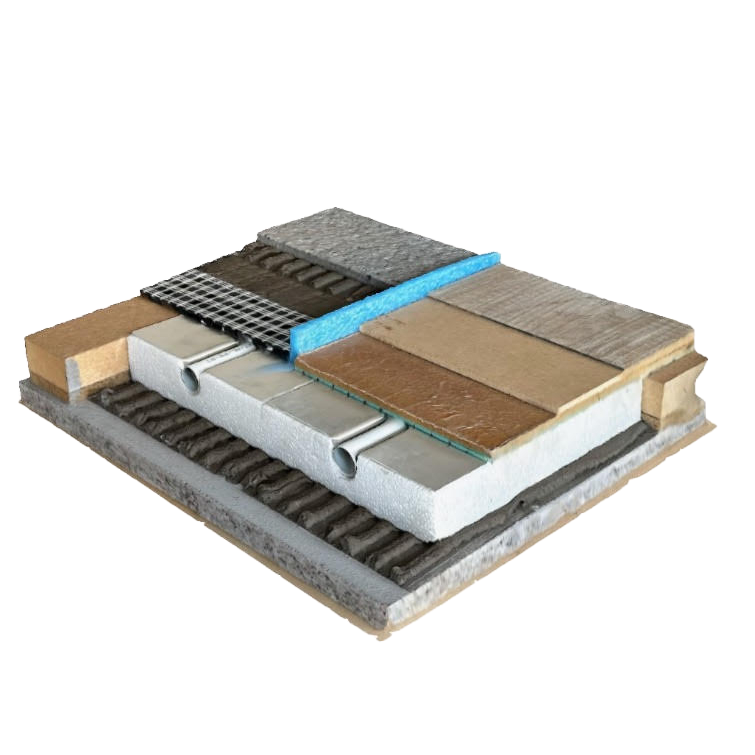
✅It couldn't be faster - underfloor heating drywall
The MC Therm drywall underfloor heating system is specially designed for easy and flexible retrofitting. The system can be installed effortlessly by professionals or DIY enthusiasts. Thanks to the versatile installation heights and installation spacing of the Ardus series, the drywall system is perfectly suited for a wide variety of spaces, whether it's a loft conversion or a basement renovation.
The advantages of MC Therm drywall underfloor heating:
- Optimal heat conduction through an integrated aluminum layer
- Predefined pipe channels for precise and fast installation
- Any surface covering - with or without intermediate layer
Perfect for energy-efficient modernizations and maximum living comfort! 🔥🏡
Efficient heat distribution with dry screed underfloor heating systems
-
Advantages of MC Therm dry screed systems
✔ Low installation height: With a minimum installation height of just 50 mm including dry screed, MC Therm underfloor heating systems are ideal for modernization projects. Especially in older buildings or attics where space is limited, the system enables efficient integration of underfloor heating without the need for complex renovations.
✔ Fast installation: Because it's a drywall system , no drying time is required. This means the heating can be used immediately after installation. This makes the system particularly suitable for renovations where a short construction time is crucial.
✔ Versatility & Flexibility: MC Therm dry screed systems are compatible with virtually all common floor coverings, including parquet, laminate, tile, carpet, or vinyl . Thanks to the even heat distribution, the system ensures a pleasant indoor climate and a comfortable living atmosphere.
-
Construction and installation
The MC Therm dry screed system is cleverly designed and allows for simple and efficient installation . First, the prefabricated screed elements with integrated channels for the heating pipes are laid on the floor. The pipes are then precisely placed in the channels and covered with a final layer of dry screed panels or other suitable materials.
Since no wet screed is required, long waiting times are eliminated, and the floor can be further worked on immediately after installation. If necessary, an additional insulation layer can be integrated beneath the system to minimize heat loss to the subfloor and further improve energy efficiency.
-
Recommendations for use
🏡 Upper floors & low installation heights: MC Therm underfloor heating is particularly suitable for rooms with low ceilings or limited space. Its slim design largely maintains the original room height while simultaneously integrating an efficient heating system .
🏠 Ground floor & basement: In areas with higher heat loss , such as ground floors or basements, the system can be supplemented with an additional layer of insulation. This keeps the heat in the room longer and reduces energy costs .
🛠 Ceiling and wall heating: Thanks to their flexible design, MC Therm systems can be used not only in the floor but also as wall or ceiling heating . This solution is particularly suitable for older buildings without underfloor heating , as it can be retrofitted without major structural changes. Wall or ceiling heating provides even, pleasant radiant heat , significantly improving living comfort.
Frequently asked
What are the disadvantages of the drywall system?
Although drywall underfloor heating offers many advantages, there are also a few points to consider. The subfloor should be as level as possible, as only unevenness of approximately 2–3 mm can be compensated for. Larger unevenness must be corrected beforehand with additional measures such as filler or leveling filler.
Another disadvantage is the higher cost compared to traditional renovation systems. The materials and the more precise installation can be more expensive. Furthermore, depending on the system, the installation height is higher than with other underfloor heating systems, which should be taken into account in rooms with low ceilings.
Despite these aspects, drywall construction offers impressive advantages due to its quick installation, low moisture exposure, and high responsiveness, making it particularly attractive for renovations and refurbishments. ✅🔥
How does underfloor heating work in drywall construction?
Drywall underfloor heating is not embedded in wet screed, but rather integrated into special drywall systems. The heating pipes are inserted into designated milled or grooved sections of the system panels and then covered with drywall panels. This construction method allows for quick installation, as no drying time is required. Furthermore, the heating system responds particularly quickly to temperature changes, as the heat is transferred directly to the floor covering.
What are the advantages of combining underfloor heating and drywall construction?
Underfloor heating in drywall construction offers numerous advantages:
✔ Fast installation – No long waiting times due to screed drying
✔ Lightweight – Perfect for old buildings and wooden beam ceilings
✔ High energy efficiency – Fast heat-up time & even heat distribution
✔ Flexible combinations – Suitable for parquet, laminate, tiles & carpet
✔ Ideal for renovations – No moisture penetration into the building structure
Thanks to these properties, the drywall system is particularly suitable for renovations and modernizations.
Is underfloor heating in drywall suitable for renovations?
Yes! Drywall underfloor heating is an ideal solution, especially for renovations and older buildings. Because it doesn't introduce additional moisture into the building and requires only a low installation height of approximately 50 mm, it's perfectly suited for renovation projects. Drywall construction is particularly effective for wood-beam ceilings or buildings with limited load-bearing capacity due to its low weight. Furthermore, the system can be installed quickly and easily, eliminating long waiting times.
Which floor coverings are compatible with drywall underfloor heating?
Drywall underfloor heating can be combined with most floor coverings:
✔ Tiles & natural stone – Very good heat conduction & storage capacity
✔ Parquet & laminate – Well suited if approved for underfloor heating
✔ Vinyl & design flooring – thin and fast heating
✔ Carpet – Works if the thermal resistance is low
It is important that the floor covering is approved for underfloor heating to ensure efficient heat transfer.
How much does drywall underfloor heating cost compared to wet screed systems?
The initial cost of drywall underfloor heating is often somewhat higher than that of traditional wet screed systems. This is due to the specially developed drywall panels and the more complex installation. However, the system offers many advantages: shorter drying times, faster installation, and a faster response time. In the long run, energy-efficient heating with drywall underfloor heating can help save heating costs.
Learn more about underfloor heating
View all-
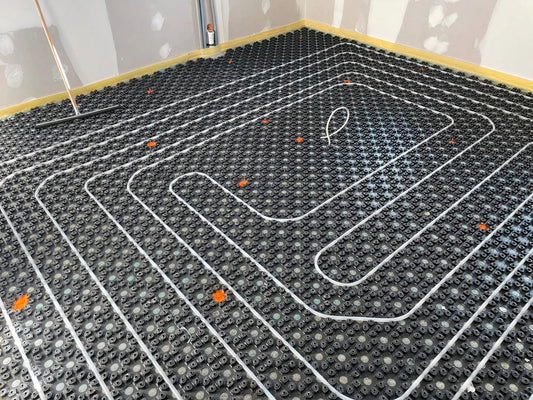
Underfloor heating in old buildings: Thin-layer...
Retrofitting underfloor heating in an older building often sounds complicated – especially due to the limited installation height and the load-bearing capacity of the floor. However, a thin-film system offers...
Underfloor heating in old buildings: Thin-layer...
Retrofitting underfloor heating in an older building often sounds complicated – especially due to the limited installation height and the load-bearing capacity of the floor. However, a thin-film system offers...
-

Installation instructions: MC Therm thin-bed un...
NerthusFlow (thin-bed underfloor heating) from MC Therm is the ideal solution for renovations and modernizations. Thanks to its low installation height, this system is ideal for retrofitting. This step-by-step guide...
Installation instructions: MC Therm thin-bed un...
NerthusFlow (thin-bed underfloor heating) from MC Therm is the ideal solution for renovations and modernizations. Thanks to its low installation height, this system is ideal for retrofitting. This step-by-step guide...
-

ZigBee 3.0 in underfloor heating control: advan...
A ZigBee 3.0 network combined with ENGO Controls offers intelligent and efficient underfloor heating control with high stability, long range, and reliable performance. Thanks to mesh technology, the connection remains...
ZigBee 3.0 in underfloor heating control: advan...
A ZigBee 3.0 network combined with ENGO Controls offers intelligent and efficient underfloor heating control with high stability, long range, and reliable performance. Thanks to mesh technology, the connection remains...
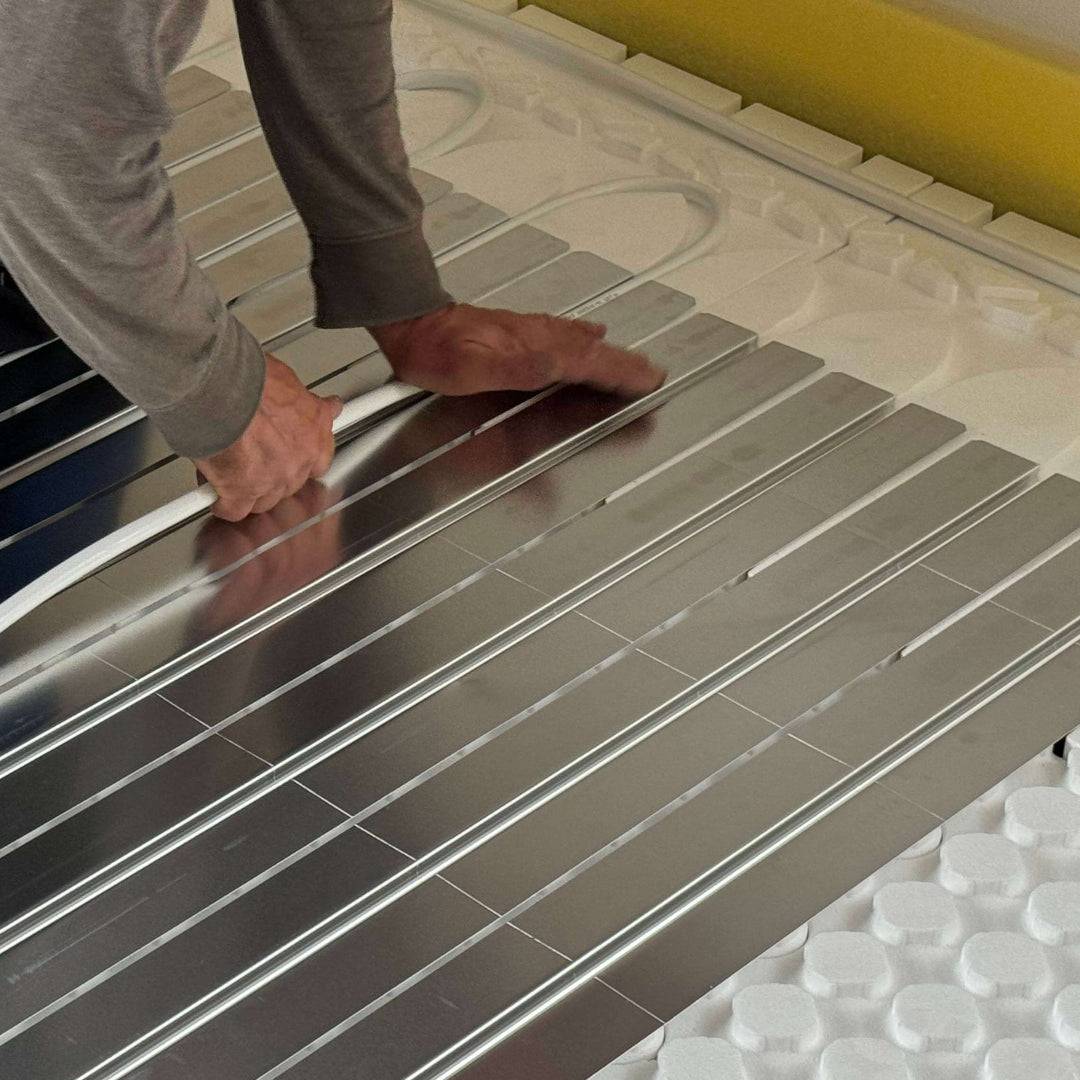
Optimally controlled - get the most out of it with the right control
An efficient drywall system 🔧🏡 forms the perfect foundation for modern underfloor heating. But only with the right control 🎛️🌡️ will your heating system reach its full potential. Smart thermostats enable precise temperature control, ensure maximum energy savings ⚡💰, and increase living comfort. Discover how to optimally control your underfloor heating and keep your home at the perfect temperature at all times! 🔥❄️
-
Thermoelectric actuator Engo E30NC-230 for underfloor heating
Vendor:Engo ControlsRegular price €9,02 EURRegular price -
EONE-230V – Smart ZigBee Room Thermostat
Vendor:Engo ControlsRegular price €64,09 EURRegular price -
Control terminal block 230V wired 8 zones
Vendor:Engo ControlsRegular price €50,82 EURRegular price -
EONE-230V – Smart ZigBee Room Thermostat
Vendor:Engo ControlsRegular price €48,69 EURRegular price -
EONE-230V – Smart ZigBee Room Thermostat
Vendor:Engo ControlsRegular price €49,51 EURRegular price
Subscribe to our emails
Be the first to hear about new products, discounts and exclusive offers.




